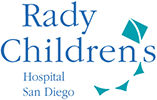Search results
-
Congenital Scoliosis for Parents
Congenital scoliosis is when the bones in a baby’s spine don’t form normally before birth. The baby may be born with a curved spine or develop one later.
-
Splints for Teens
A splint is a support device that keeps an injured area from moving. Doctors often use splints to hold bones and joints in place so they can heal after a fracture.
-
Safety Tips: Tennis for Teens
Injuries in tennis are rare, but it's good to be aware before you play. To minimize your risk of injury while playing tennis, follow these safety tips.
-
Growth Plates for Parents
Growth plates are the areas of new bone growth, usually near the ends of long bones. A growth plate is weaker than solid bone. This makes it more likely to get injured.
-
Arthrocentesis (Joint Aspiration) for Parents
Arthrocentesis (joint aspiratio) involves withdrawing (aspirating) a sample of fluid from a joint using a needle and syringe.
-
Puberty Basics for Teens
Voice cracking? Clothes don't fit? Puberty can be a confusing time, but learning about it doesn't have to be. Read all about it.
-
Focal Aware Seizures for Parents
Focal aware seizures is a seizure that happens while a person is awake and alert and aware of what is going on.
-
Broken Bones for Teens
Bones are tough stuff — but even tough stuff can break. Find out what happens when a bone fractures.
-
Epilepsy for Teens
Seizures are a common symptom of epilepsy, a condition that affects millions of people worldwide. Learn all about epilepsy, including what to do if you see someone having a seizure.
-
Osteogenesis Imperfecta (Brittle Bone Disease) for Parents
Osteogenesis imperfecta (or brittle bone disease) prevents the body from building strong bones. People with OI have bones that might break easily.

 Note: All information is for educational purposes only. For specific medical advice,
diagnoses, and treatment, consult your doctor.
Note: All information is for educational purposes only. For specific medical advice,
diagnoses, and treatment, consult your doctor.